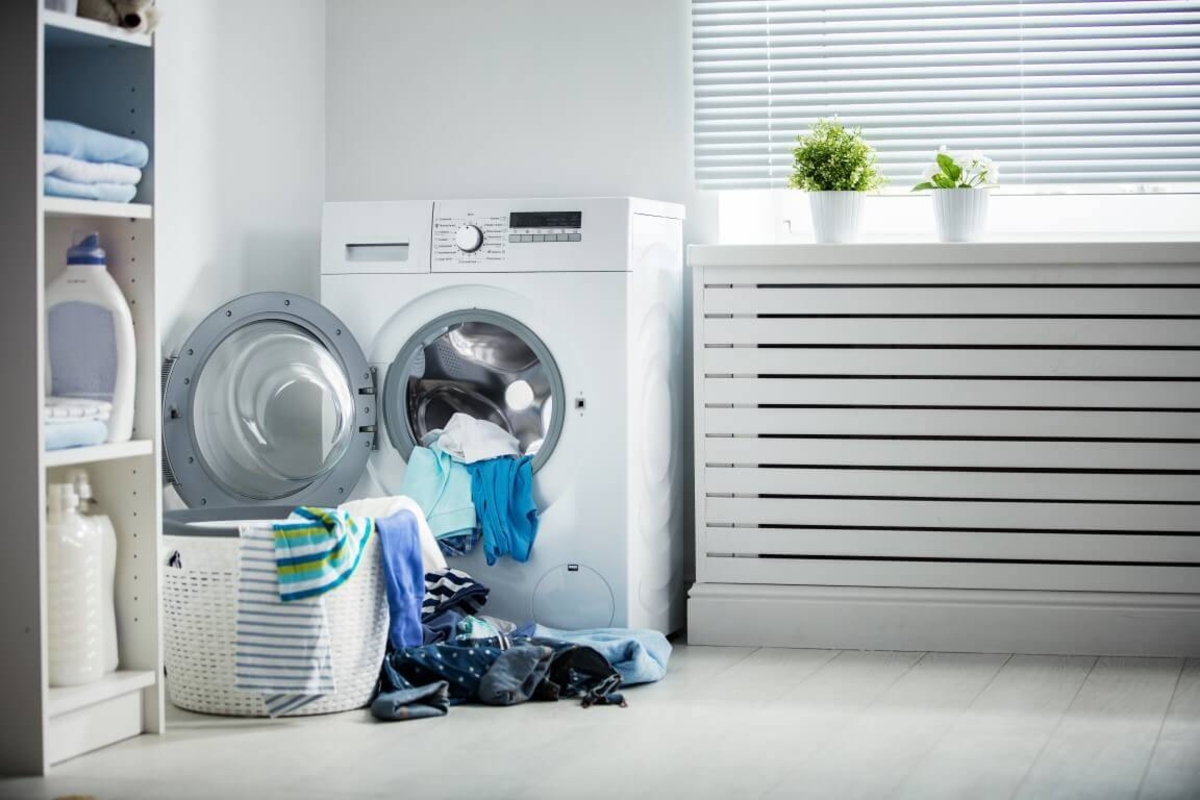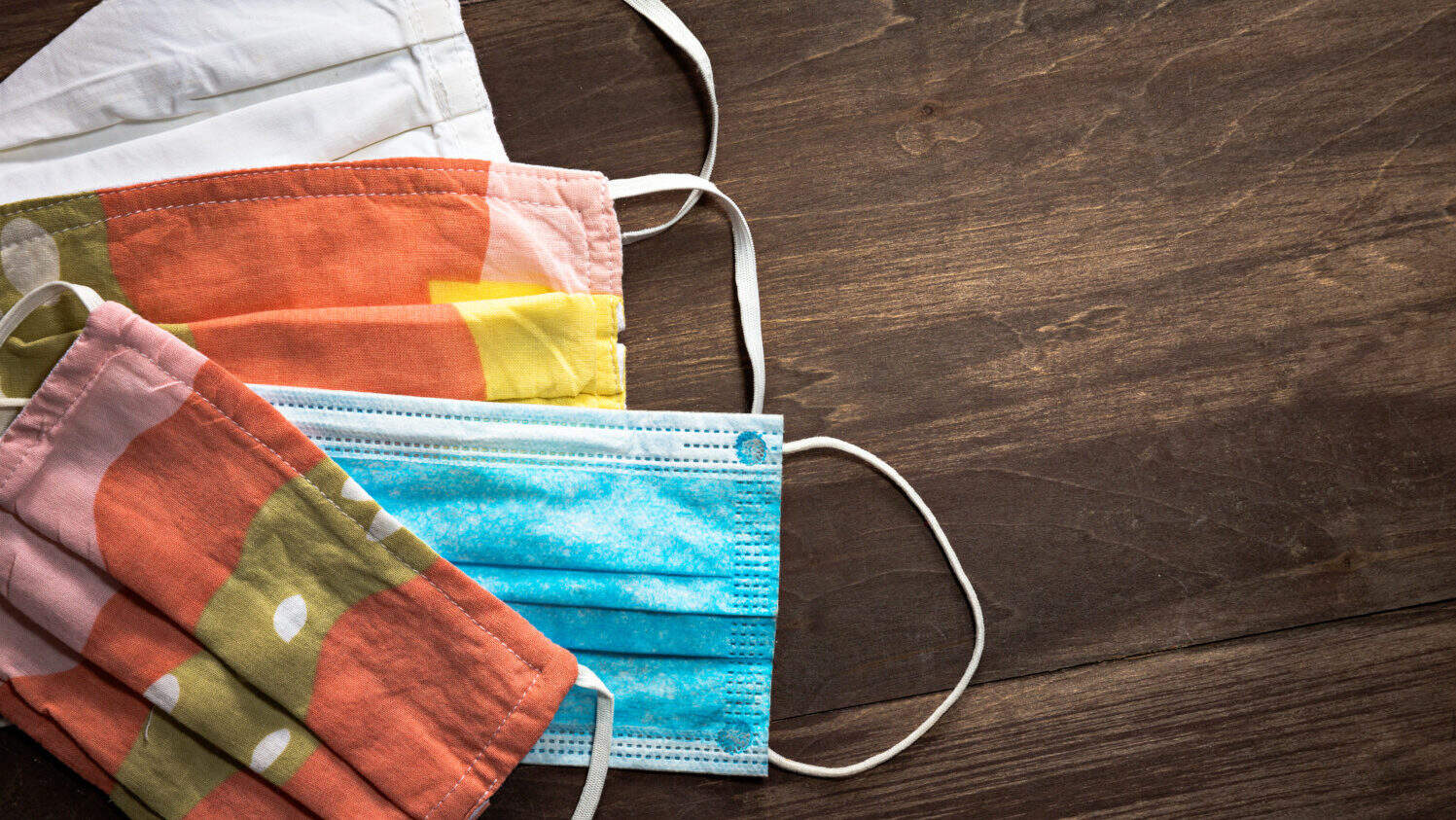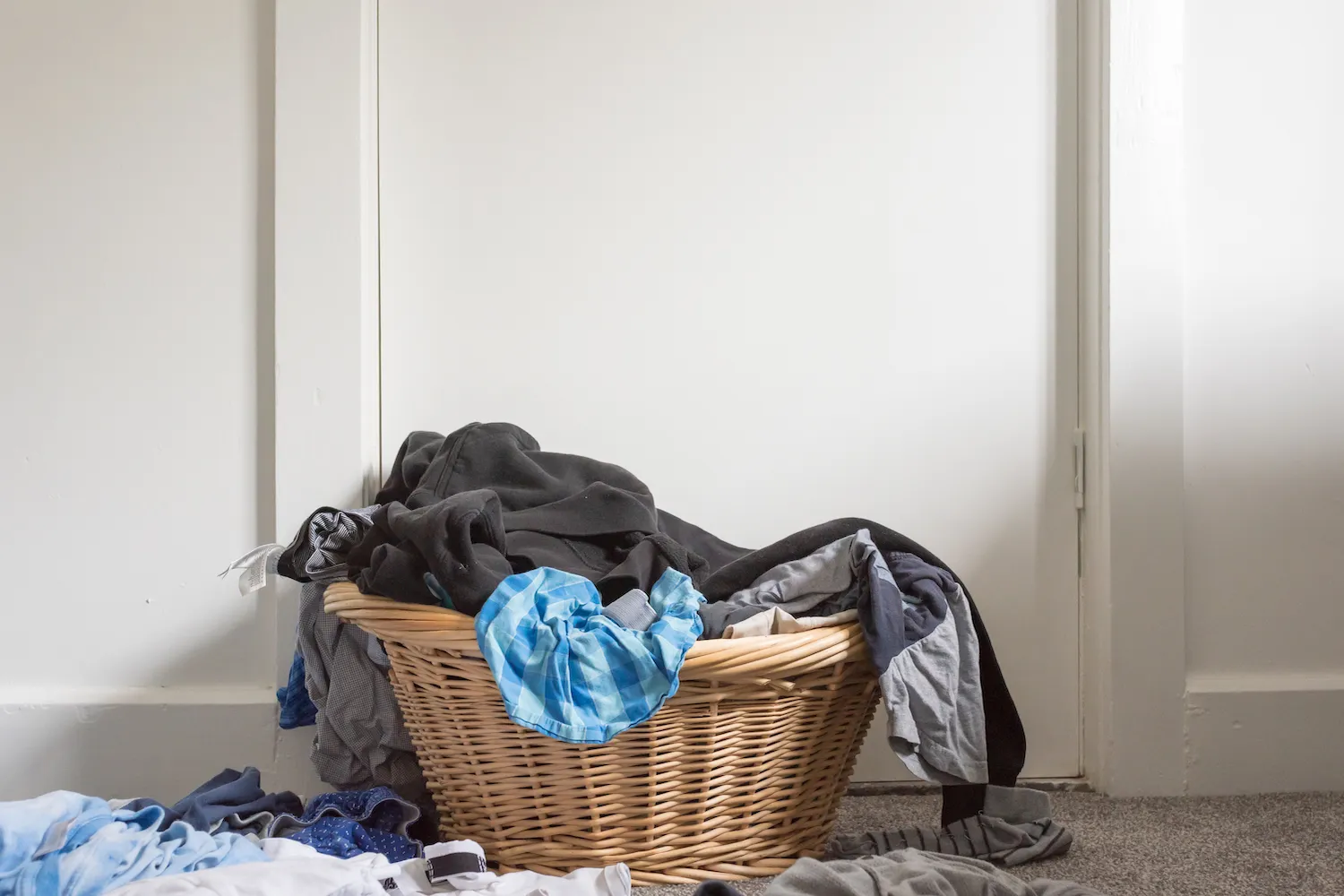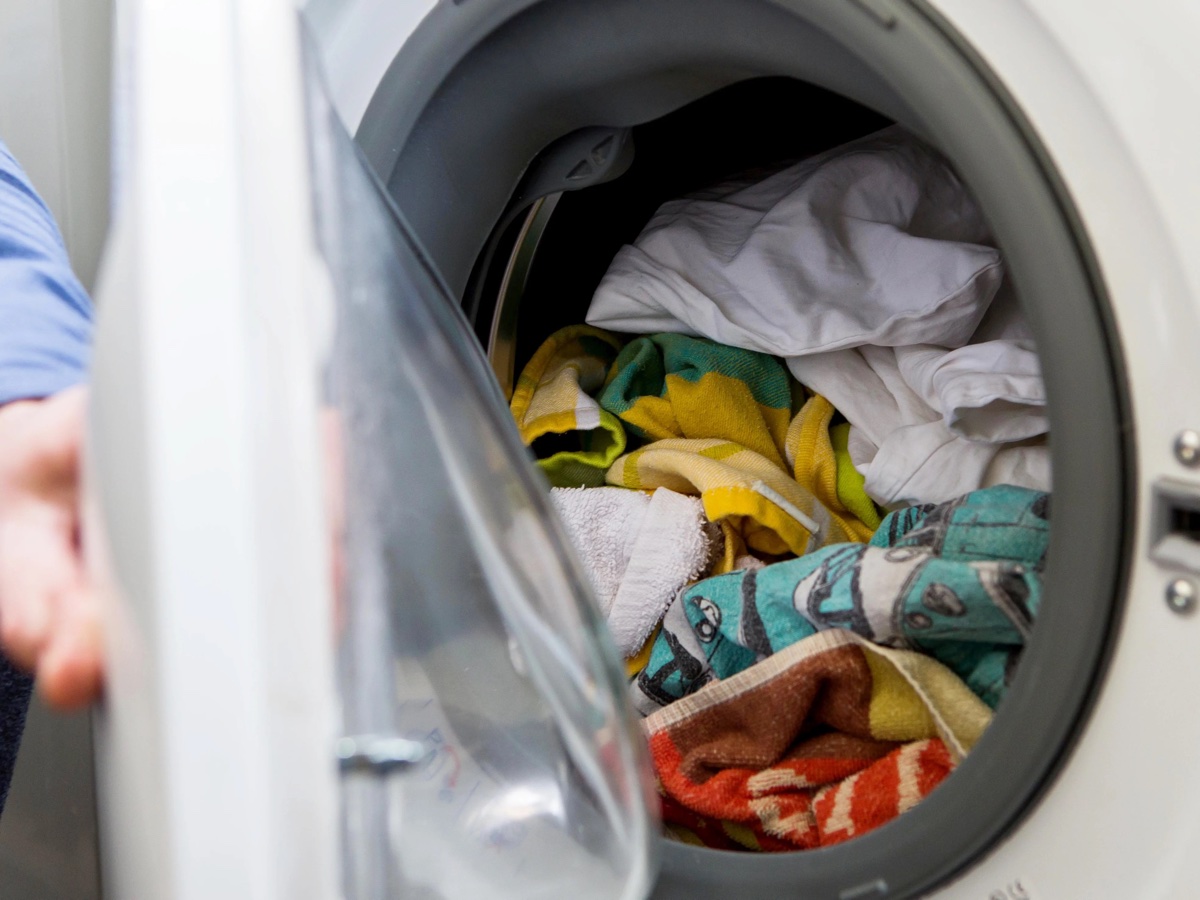Home>Storage Ideas>Bedroom Storage>7 Common Laundry Mistakes That Can Damage Clothes


Bedroom Storage
7 Common Laundry Mistakes That Can Damage Clothes
Modified: September 1, 2024
Avoid these 7 common laundry mistakes that can damage clothes and keep your bedroom storage looking its best.
(Many of the links in this article redirect to a specific reviewed product. Your purchase of these products through affiliate links helps to generate commission for Storables.com, at no extra cost. Learn more)
Introduction
Laundry day is a chore that most of us have to tackle on a regular basis. It can be time-consuming and tiresome, but it’s a necessary task to keep our clothes fresh and clean. However, many people unknowingly make common mistakes that can actually damage their clothes in the process.
In this article, we will discuss seven common laundry mistakes that can harm your clothes and provide useful tips on how to avoid them. By following these suggestions, you can ensure that your garments stay in excellent condition, extending their lifespan and saving you money in the long run.
So, let’s dive right in and learn how to improve your laundry routine and protect your beloved clothes!
Key Takeaways:
- Avoid overloading the washing machine to ensure proper cleaning and prevent strain on the machine, prolonging its lifespan and keeping your clothes in excellent condition.
- Sort clothes by color and fabric type, use the correct amount of detergent, and treat stains promptly to preserve the integrity of your garments and extend their lifespan.
Mistake 1: Overloading the Washing Machine
One of the most common laundry mistakes that people make is overloading the washing machine. It’s tempting to cram as many clothes as possible into one load to save time and energy, but this can actually do more harm than good.
When you overload the washing machine, it doesn’t leave enough room for the clothes to move around freely. This can prevent proper cleaning and rinsing, leading to detergent residue and trapped dirt on your garments. Additionally, overloading can put strain on the machine’s motor and cause it to wear out faster.
To avoid this mistake, always follow the manufacturer’s recommendations for load size. Leave enough space for the clothes to circulate and be cleaned effectively. If you have a large pile of laundry to do, split it into smaller loads and wash them separately.
By giving your clothes enough room to move and ensuring proper cleaning, you’ll not only achieve better results but also prolong the life of your washing machine.
Remember, it’s better to do multiple smaller loads than one large, overloaded load. Your clothes and your machine will thank you!
Mistake 2: Not Sorting Clothes by Color or Fabric Type
Sorting your laundry may seem like a tedious and time-consuming task, but it is an essential step to ensure that your clothes stay in pristine condition. Neglecting to sort your clothes by color or fabric type can lead to color bleeding, fabric damage, and overall deterioration of your garments.
When different colored clothes are washed together, there is a risk of the colors bleeding onto each other. This can result in discolored patches or even ruin the entire load. Sorting your clothes into separate piles based on color – whites, lights, and darks – can help prevent color transfer and keep your clothes looking vibrant.
Similarly, different fabrics have different care requirements. Delicate fabrics like silk, lace, or wool should be washed separately or placed in a mesh laundry bag to protect them from getting snagged or stretched by rougher fabrics. Mixing delicate and heavy fabrics can cause friction and lead to damage or pilling.
Take the time to sort your clothes before starting the laundry process. It may seem like an extra step, but it can save you from the disappointment of ruined clothes and extend their lifespan.
If time is a constraint, consider using color-catching sheets or laundry detergents specifically designed to prevent color bleeding. These products can help you wash a mixed load with fewer worries, but nothing beats sorting your laundry properly.
Remember, a little extra effort in sorting your clothes can go a long way in preserving their quality and ensuring that they look their best for years to come.
Mistake 3: Using Too Much Detergent
When it comes to doing laundry, more is not always better. Using too much detergent can actually be detrimental to your clothes and your washing machine. Many people have a tendency to pour excessive amounts of detergent, thinking that it will result in cleaner clothes. However, this is a common mistake that can have negative consequences.
Using an excessive amount of detergent can cause a buildup on your clothes and make them feel stiff or sticky. It can also leave behind residue that is difficult to rinse out, leading to trapped dirt and odors. Additionally, the excess suds can put strain on your washing machine and create unnecessary wear and tear.
Instead of pouring in a large amount of detergent, follow the instructions on the packaging for the recommended dosage. In most cases, using too much detergent is not necessary because modern detergents are highly concentrated and formulated to be effective even in smaller amounts. If you have a particularly dirty load or heavily soiled items, pre-treating the stains or using a stain remover can be more effective than using excess detergent.
Another tip to keep in mind is to choose a detergent that is appropriate for your specific washing machine and water type. High-efficiency (HE) washing machines require detergents specifically designed for them, as using regular detergents can cause excess sudsing and may not be as effective.
By using the correct amount of detergent, you can achieve clean and fresh-smelling clothes without the risk of residue or damage. Remember, when it comes to detergent, less is more!
Mistake 4: Ignoring Stain Treatment
Stains happen, and ignoring them during the laundry process is a common mistake that can lead to permanent damage to your clothes. Whether it’s a spill, a smudge, or a stubborn stain that’s been left untreated, it’s important to address stains before tossing your clothes into the washing machine.
When stains are ignored, they have a higher chance of setting into the fabric fibers, making them more difficult to remove later. This can result in discolored spots or even the complete ruination of the garment. Additionally, some stains may require specific treatment methods or stain removers to effectively lift the discoloration.
To avoid this mistake, inspect your clothes before washing and treat any stains immediately. You can use common household items such as dish soap, baking soda, or white vinegar to help loosen and remove stains. Gently dab or rub the stain with the appropriate solution, being careful not to rub too harshly as it can damage the fabric.
It’s also important to note that different stains require different treatment methods. For example, grease stains may require the use of a pre-treatment spray or applying cornstarch to absorb the oil. Wine or fruit stains may respond well to a mixture of water and hydrogen peroxide. Educate yourself on stain removal techniques for common types of stains, or consult a stain removal guide for more specific instructions.
Once you’ve treated the stain, allow it to sit for a few minutes before proceeding with the regular laundry process. Then, wash the garment as you normally would, following the recommended care instructions on the clothing label.
By giving proper attention to stain treatment, you can prevent permanent damage to your clothes and maintain their appearance and longevity. Don’t let a small stain ruin a perfectly good garment—be proactive in stain removal before it becomes a laundry nightmare.
To prevent clothes damage, always check the care label before washing, use the right water temperature, and avoid overloading the machine.
Mistake 5: Using Hot Water for All Clothes
Using hot water for every load of laundry is a common mistake that can have detrimental effects on your clothes. While hot water can be effective in removing stains and killing certain bacteria, it is not suitable for all types of fabrics or colors.
Hot water can cause clothes to shrink, fade, or lose their shape. This is especially true for delicate fabrics like silk, wool, or certain synthetic materials. The heat can also weaken the fibers, making them more prone to damage and deterioration over time.
Additionally, using hot water unnecessarily contributes to higher energy consumption, driving up your utility bills and having a negative impact on the environment. It’s important to consider the water temperature requirements of your clothes and adjust accordingly.
To avoid this mistake, familiarize yourself with the care labels on your garments. They provide valuable information on the recommended water temperature for each item. Generally, cold or warm water is sufficient for most loads of laundry, as it can effectively clean without causing damage.
Cold water is suitable for delicate fabrics and dark or bright-colored clothing, as it helps preserve their colors and prevents fading. Warm water can be used for sturdier fabrics like cotton or linen, as it can aid in removing stains and dirt.
However, there are exceptions when hot water is necessary, such as for towels, bed sheets, or heavily soiled items. In these cases, be sure to check the care labels and use hot water sparingly.
By using the appropriate water temperature for each load, you can maintain the quality and lifespan of your clothes while being mindful of energy consumption. Don’t let hot water become a fashion foe—use it wisely and your clothes will thank you!
Mistake 6: Tumble Drying Delicate Fabrics
Tumble drying may seem like a convenient solution to quickly dry your laundry, but it can be detrimental to delicate fabrics. Many people make the mistake of tossing all their clothes into the dryer without considering the fabric type, resulting in shrinkage, stretching, or damage to their favorite garments.
Delicate fabrics such as silk, lace, satin, or certain types of knits require more gentle care and should not be subjected to the heat and vigorous agitation of a tumble dryer. The high temperatures and mechanical action can cause these fabrics to lose their shape, become misshapen, or even tear.
To avoid this mistake, check the care labels on your clothes for specific drying instructions. If a garment is labeled as “dry clean only” or “lay flat to dry,” it is best to follow those instructions to maintain its integrity.
For items that can be machine dried, like cotton or polyester, use a lower heat setting or opt for air-drying methods instead. Hanging your clothes on a clothesline or laying them flat on a clean, dry surface will allow them to dry naturally while preserving their shape and quality.
If you must use a tumble dryer, consider investing in a drying rack or mesh bags designed for delicate items. These accessories can provide an extra layer of protection by allowing the clothes to air dry while still benefiting from the tumble dryer’s gentle heat circulation.
Remember, taking the time to air dry delicate fabrics will ensure that they maintain their original look and feel, and it will extend their lifespan. Don’t let the convenience of a tumble dryer compromise the integrity of your favorite delicate garments.
By properly caring for delicate fabrics and avoiding the tumble dryer, you’ll be rewarded with clothes that retain their beauty and quality for years to come.
Mistake 7: Neglecting to Clean the Washing Machine
While the washing machine is responsible for keeping our clothes clean, it is often overlooked when it comes to cleaning itself. Neglecting to clean your washing machine can not only lead to unpleasant odors but also affect the cleanliness of your clothes and the efficiency of the machine.
Over time, dirt, detergent residue, and fabric fibers can accumulate inside the drum, detergent dispenser, and other hidden areas of the washing machine. This buildup provides a breeding ground for bacteria, mildew, and mold, which can cause unpleasant smells and even transfer onto your clothes.
To avoid this mistake, it’s important to periodically clean your washing machine. Here are a few simple steps to help keep your machine fresh and in good working condition:
1. Clean the drum: Run an empty cycle with hot water and add about one cup of vinegar or lemon juice to clean the drum. This will help remove any buildup and disinfect the machine. You can also use a specialized washing machine cleaner for more stubborn residue.
2. Clean the detergent dispenser: Remove the detergent dispenser and wash it thoroughly with warm water and mild soap. Rinse it well to ensure there is no leftover residue. If your dispenser is removable, you can soak it in a vinegar and water solution to remove any stubborn buildup.
3. Wipe down the door and seals: Use a damp cloth to wipe down the door and rubber seals of the machine, as these areas are prone to mold and mildew growth. Pay close attention to any crevices or folds where moisture can accumulate.
4. Leave the door open: After each wash cycle, leave the washing machine door and detergent dispenser drawer open to allow air to circulate and prevent moisture buildup.
Regularly maintaining and cleaning your washing machine will not only eliminate unpleasant odors but also improve the efficiency and longevity of the appliance. By doing so, you can ensure that your clothes are washed in a clean and hygienic environment, resulting in fresh and odor-free laundry.
Don’t forget, a clean washing machine is just as important as clean clothes! Take the time to give your machine the TLC it deserves, and you’ll be rewarded with fresh, clean clothes every time.
Conclusion
Laundry may seem like a simple task, but there are common mistakes that many people make that can lead to damaged clothes and inefficient washing routines. By being aware of these mistakes and making small adjustments to your laundry routine, you can ensure that your clothes stay in excellent condition, prolonging their lifespan and saving you money in the long run.
Avoiding the mistake of overloading the washing machine allows for proper cleaning and prevents strain on the machine itself. Sorting clothes by color or fabric type prevents color bleeding and fabric damage. Using the correct amount of detergent prevents residue buildup and protects both your clothes and the washing machine. Treating stains promptly helps prevent permanent damage to fabrics.
Using the appropriate water temperature for different fabrics and colors helps preserve the integrity of the garments and saves energy. Avoiding tumble drying delicate fabrics prevents shrinkage or other damage. Lastly, cleaning the washing machine regularly removes built-up grime and bacteria, ensuring fresh and clean laundry.
By following these tips and being mindful of your laundry habits, you can maintain the quality of your clothes and keep them looking their best for longer. Not only will this save you money on replacing damaged clothes, but it will also contribute to a more sustainable lifestyle by reducing waste.
So, the next time you do the laundry, remember to give your clothes and your washing machine the care they deserve. Take the time to avoid these common mistakes and incorporate good laundry practices into your routine. Your clothes will thank you with their longevity, and you’ll enjoy the satisfaction of wearing fresh, clean garments.
Frequently Asked Questions about 7 Common Laundry Mistakes That Can Damage Clothes
Was this page helpful?
At Storables.com, we guarantee accurate and reliable information. Our content, validated by Expert Board Contributors, is crafted following stringent Editorial Policies. We're committed to providing you with well-researched, expert-backed insights for all your informational needs.















0 thoughts on “7 Common Laundry Mistakes That Can Damage Clothes”